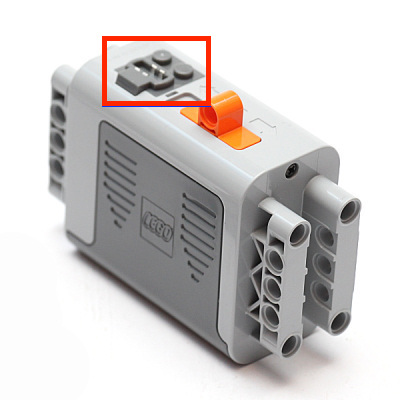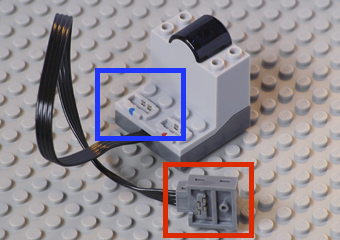Here we describe how to set up and use LEGO Power Functions components for the non-variable and variable speed configurations of the DIY Rotating Tank.
Fixed Motor Speed
1. Attach the motor’s wire to its receptor on the Battery Box
These are highlighted by the blue boxes in the images below.


2. Slide the orange switch on the Battery Box in either direction
One direction spins clockwise and the other direction spins counterclockwise. To turn the motor back off, just return the switch to the middle.
Variable Motor Speed (requires optional components)
Attach the wire emanating from the IR Receiver to its receptor on the Battery Box
Both segments highlight in red below.
1. Attach the motor’s wire to either receptor on the IR Receiver
Both segments highlighted in blue below. It doesn’t matter which color you choose.



2. Move the orange switches on the IR Remote and IR Receiver to the same number
Switches are highlighted in green below. It doesn’t matter which number, as long as they are the same on both.


3. Turn on the battery box as described above.
Note that, unlike when the motor was directly connected to the battery, the motor won’t start right away.
4. On the IR Remote, press the red square button labeled with the color of the receptor on the IR remote that the motor is connected to
So if the motor is connected to the blue recptor, press the button with the blue line underneath it (i.e. the one on the right). If, instead, the motor is plugged into the red receiver, press the button with the red marking (i.e. the one on the left).
5. Turn the dial on the side of the red button you just pushed.
The motor should start turning. Note that there is sometimes a delay of roughly one second between turning the dial and the motor’s response.
The more you turn the dial in one direction, the faster the motor will spin. To make it spin slower, turn the dial in the opposite direction. Each tick of the dial will change the speed slightly, until it’s at full speed in either direction.
